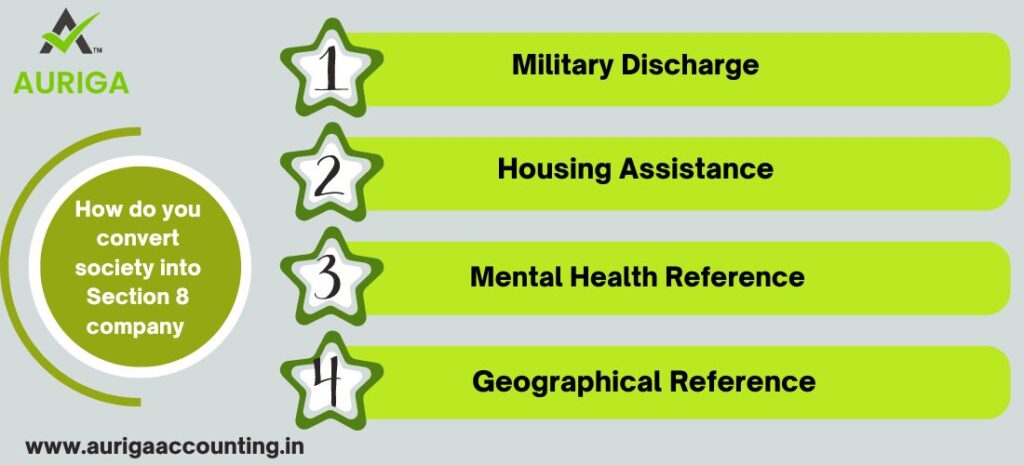
WEATHER CO-OPERATIVE SOCIETY CAN BECAME A MEMBER OF A SECTION 8 COMPANY?
Introduction
ToggleYOU NEED TO KNOW WEATHER CO-OPERATIVE SOCIETY CAN BECAME A MEMBER OF A SECTION 8 COMPANY?
The eligibility of a cooperative society to become a member of a Section 8 company depends on the specific rules and regulations outlined in the memorandum and articles of association of the Section 8 company. Generally, Section 8 companies may have provisions allowing various entities, including cooperative societies, to become members. The decision is subject to compliance with the company’s internal policies and legal requirements. It is advisable to review the specific provisions and consult legal professionals for accurate information tailored to the context of the Section 8 company in question. Visitofficialwebsite
PROCESS TO CO-OPERATIVE SOCIETY MEMBER OF SECTION 8 COMPANY
Alignment of Objectives:
- The cooperative society should assess its objectives and activities to ensure they align with the non-profit and charitable objectives of the Section 8 company. It’s essential that the cooperative’s mission complements the charitable mission of the Section 8 company.
2. Legal Framework:
- Ensure that both the cooperative society and the Section 8 company understand and comply with the legal frameworks that govern them. Cooperative societies are typically regulated under the state’s Cooperative Societies Act, while Section 8 companies are governed by the Companies Act, 2013. Legal compliance is essential.
3. Application and Proposal:
- The cooperative society interested in becoming a member of the Section 8 company should prepare a formal application or proposal. This document should outline the reasons for seeking membership, the cooperative’s objectives, and how its activities align with the Section 8 company’s charitable mission.
4. Submission of Application:
- The cooperative society submits the application or proposal to the Section 8 company’s board of directors or governing body. It’s advisable to ensure that the application includes all relevant details and demonstrates the cooperative’s commitment to the Section 8 company’s mission.
5. Review and Approval:
- The board of directors or governing body of the Section 8 company reviews the application and proposal. They evaluate whether the cooperative society’s objectives and activities are in harmony with the company’s non-profit goals. If the Section 8 company’s leadership approves the application, they may grant membership to the cooperative society.
6. Membership Agreement:
- Once the cooperative society’s application is approved, the Section 8 company and the cooperative may enter into a membership agreement. This agreement outlines the terms and conditions of the cooperative society’s membership, including its rights, responsibilities, contributions, and benefits.
7. Compliance and Record-Keeping:
- Both the cooperative society and the Section 8 company must maintain accurate records of the cooperative society’s membership and participation in the Section 8 company’s activities. Compliance with legal and regulatory requirements is critical.
8. Participation and Benefits:
- The cooperative society begins participating in the Section 8 company’s activities and decision-making processes. Depending on the membership agreement, the cooperative society may enjoy benefits such as contributing to the company’s charitable initiatives, sharing in any surpluses, and supporting the company’s mission.
9. Ongoing Compliance:
- The cooperative society and the Section 8 company must ensure ongoing compliance with their respective legal and regulatory obligations. This includes adhering to the Cooperative Societies Act, Companies Act, and any other relevant laws.
10. Reporting and Accountability:
- Both entities should maintain transparency and accountability in their operations. They may need to submit periodic reports and financial statements as required by the relevant laws and their governing documents.
WHAT ARE THE FORM REQUIRED TO CONVERTING CO-OPERATIVE SOCIETY TO SECTION 8 COMPANY
Form INC-32 (SPICe – Simplified Proforma for Incorporating Company Electronically): This form is used for applying for the incorporation of the new Section 8 company. It includes details about the proposed company’s name, registered office address, directors, and the proposed license under Section 8 of the Companies Act.
Form INC-33 (e-Memorandum of Association): This form is used to file the Memorandum of Association (MOA) electronically. The MOA outlines the company’s objectives, rules, and regulations. In the case of a conversion, the MOA should reflect the new objectives and charitable purposes of the Section 8 company.
Form INC-34 (e-Articles of Association): Similar to the MOA, this form is used to file the Articles of Association (AOA) electronically. The AOA contains the rules and regulations for the internal management and operation of the company. When converting a cooperative society, the AOA should align with the new status and objectives as a Section 8 company.
Form INC-35 (e-Form URC-1): This form is specifically used for converting a cooperative society into a company. It contains details about the existing cooperative society, such as its registration number, and outlines the proposed changes for the conversion into a Section 8 company.
Form INC-9 (Declaration by First Director): This form contains a declaration by the first director of the proposed Section 8 company stating that all the requirements of the Companies Act have been complied with. The director must confirm that the company will operate as a Section 8 company with non-profit objectives.
Form INC-10 (Verification of Registered Office): This form is used to verify the registered office of the proposed Section 8 company. It includes details of the registered office address and is accompanied by supporting documents.
Form INC-11 (License for a Section 8 Company): This form is submitted to the RoC to obtain a license for the Section 8 company. It outlines the details of the charitable objectives and activities that the Section 8 company will undertake.
Form INC-12 (Application for Grant of License under Section 8): This form is required to apply for the license under Section 8 of the Companies Act. It includes details about the proposed name of the Section 8 company, its registered office, and its charitable activities.
BENEFITS OF CO-OPERATIVE SOCIETY BECAME A MEMBER OF SECTION 8 COMPANY
Shared Objectives: The most significant benefit is the alignment of objectives. When a cooperative society becomes a member of a Section 8 company, it signifies that their missions and purposes are compatible. This alignment enhances the effectiveness of both organizations in pursuing their goals.
Pooling of Resources: Cooperative societies often have resources, whether financial, infrastructure, or human capital, that can be leveraged to support the Section 8 company’s charitable activities. This collaboration allows for the efficient utilization of resources for a common cause.
Expanded Outreach: The cooperative society may have an established presence and network in the community or sector it serves. By becoming a member of a Section 8 company, the cooperative can help expand the reach and impact of the Section 8 company’s charitable initiatives.
Expertise and Experience: Cooperative societies may have expertise in specific fields related to their activities. This knowledge and experience can be valuable to the Section 8 company, enhancing its ability to address social and charitable issues effectively.
Financial Support: Cooperative societies can provide financial support to the Section 8 company’s initiatives. This support may come in the form of donations, grants, or contributions to specific projects and programs.
Participation in Decision-Making: Membership in the Section 8 company often entails the right to participate in decision-making processes. The cooperative society can have a say in the direction and priorities of the Section 8 company’s charitable activities.
Enhanced Credibility: Collaboration with a reputable cooperative society can enhance the credibility and reputation of the Section 8 company. This, in turn, can attract more donors, partners, and supporters to the Section 8 company’s initiatives.
Diverse Skill Sets: Cooperative societies may bring a diverse set of skills and competencies to the Section 8 company. This diversity can be harnessed for the benefit of the charitable programs and projects undertaken by the Section 8 company.
Support for Rural Development: Many cooperative societies have a strong presence in rural areas and are involved in activities related to agriculture, dairy, and rural development. By becoming a member, the Section 8 company can access the cooperative’s expertise in these areas to promote rural development projects.
Economies of Scale: By collaborating, both organizations can benefit from economies of scale. This can lead to cost savings in areas such as procurement, logistics, and the implementation of charitable project.
Can a cooperative society be a member of a company
Certainly, a cooperative society can become a member of a company, and here are key points to consider:
Inclusive Membership: The Companies Act, 2013, allows various entities, including cooperative societies, to become members of a company. Membership is not restricted to individuals and can encompass a range of organizations.
Company’s Articles of Association: The specific rules regarding membership eligibility, shareholding, and rights may be outlined in the company’s articles of association. It’s important to review these governing documents for any specific conditions.
Compliance with Regulations: The cooperative society must comply with legal and regulatory requirements to become a member. This includes adhering to the company’s internal policies and any statutory provisions governing membership.
Shareholding Structure: Cooperative societies can hold shares in the company, contributing to the shareholding structure. The extent of shareholding and associated rights may be defined by the company’s bylaws.
Legal Consultation: It’s advisable for both the company and the cooperative society to seek legal advice. Legal professionals can ensure that the arrangement complies with relevant corporate laws and regulations.
Mutual Benefit: The cooperative society and the company should mutually benefit from the arrangement. The terms of cooperation, benefits, and any obligations should be clearly defined in agreements or contracts.
Participation in Decision-Making: Depending on the shareholding structure and the company’s governance framework, the cooperative society may have the right to participate in decision-making processes through voting rights.
Contribution to Capital: The cooperative society, as a member, may contribute to the capital of the company by acquiring shares. This capital can be utilized for the company’s operations and growth.
Transparent Communication: Open and transparent communication between the company and the cooperative society is crucial. Both parties should be aware of their rights, responsibilities, and any changes that may affect their relationship.
Alignment of Objectives: The cooperative society’s objectives should align with the company’s mission and values. This alignment contributes to a harmonious and mutually beneficial partnership.
It’s essential for both the company and the cooperative society to understand the legal implications, adhere to regulatory requirements, and establish a clear and mutually beneficial framework for their association
Can a Section 8 company take over a society?
Yes, it is possible for a Section 8 company to take over a society, but the process involves legal procedures and compliance with regulatory requirements. Here are key points to consider:
Approval from Society Members:
- The members of the society need to pass a resolution approving the takeover by the Section 8 company. This decision is typically made in a general meeting.
Resolution for Conversion:
- The society should pass a resolution for the conversion into a Section 8 company. This involves obtaining consent from the majority of society members.
Name Reservation:
- Apply for the reservation of a suitable name for the Section 8 company through the Ministry of Corporate Affairs (MCA) portal.
Drafting MOA and AOA:
- Draft the Memorandum of Association (MOA) and Articles of Association (AOA) for the Section 8 company, outlining its charitable or non-profit objectives.
Application to Registrar of Companies (RoC):
- Submit an application to the RoC for the conversion, including the MOA, AOA, and other necessary documents. The application should specify the takeover of the society by the Section 8 company.
License Application:
- Apply for a license under Section 8 of the Companies Act. The application should provide details about the takeover, objectives, and activities of the Section 8 company.
Approval from Central Government:
- The application for the license is scrutinized by the RoC and requires approval from the Central Government. The government evaluates the feasibility and compliance of the proposed activities.
Transfer of Assets and Liabilities:
- Once approval is granted, initiate the process of transferring the assets and liabilities of the society to the Section 8 company. This should be done in accordance with legal requirements.
Utilization of Funds and Properties:
- The Section 8 company should utilize the existing funds and properties for the charitable or non-profit objects as specified in its MOA.
Intimation to RoC:
- Inform the RoC about the completion of all formalities related to the takeover, and provide necessary documents and information.
How do you convert society into Section 8 company

In some contexts, “Section 8” may be used as slang with specific meanings. Here are four points regarding the slang usage of “Section 8”:
Military Discharge:
- “Section 8” can be slang for a military discharge under Section 8 of the United States Uniform Code of Military Justice. This discharge is often associated with mental health issues, rendering a service member unfit for military service.
Housing Assistance:
- In the context of housing, “Section 8” may refer to the U.S. government’s Housing Choice Voucher Program, which provides rental assistance to low-income individuals and families.
Mental Health Reference:
- Colloquially, “Section 8” may be used to refer to someone who is perceived as mentally unstable or crazy, drawing a connection to the military discharge mentioned above.
Geographical Reference:
- In some urban slang or street terminology, “Section 8” might be used as a reference to a specific area or neighborhood, especially if it is associated with subsidized housing or lower-income communities.
It’s important to note that the meaning of “Section 8” in slang can vary based on the context, and the interpretations mentioned above may not cover all possible uses. The slang meaning of a term can evolve over time and may differ in different regions or communities.
How do you convert society into Section 8 company
Converting a society into a Section 8 company in India involves several steps and legal procedures. Below are key points to consider for the conversion:
Resolution and Approval:
- The society must pass a resolution in a general meeting, obtaining approval from the members for the conversion into a Section 8 company.
Seeking Name Approval:
- Apply for the reservation of a suitable name for the Section 8 company through the Ministry of Corporate Affairs (MCA) portal.
Memorandum and Articles of Association (MOA & AOA):
- Draft the Memorandum of Association (MOA) and Articles of Association (AOA) in compliance with the provisions of Section 8 of the Companies Act, 2013.
Application Submission:
- File an application for the conversion with the Registrar of Companies (RoC) along with the necessary documents, including the MOA, AOA, and other required declarations.
Declaration and Undertakings:
- Prepare and submit a declaration and undertaking, as specified under Section 8 of the Companies Act.
License Application:
- Apply for a license under Section 8 of the Companies Act. The application must include details about the objectives, activities, and financial projections of the proposed Section 8 company.
Obtaining License:
- Once the RoC and the Central Government are satisfied with the application, a license will be issued. This license confirms the conversion of the society into a Section 8 company.
Transfer of Assets and Liabilities:
- Transfer the assets and liabilities of the society to the newly formed Section 8 company. This process must be done in compliance with legal requirements.
Existing Funds and Properties:
- Utilize the existing funds and properties of the society for the charitable or non-profit objects as outlined in the MOA of the Section 8 company.
Intimation to the Registrar:
- Inform the RoC about the completion of all formalities related to the conversion, and provide necessary documents and information.
Issuance of Certificate of Incorporation:
- Upon satisfaction of all requirements, the RoC will issue a Certificate of Incorporation for the newly converted Section 8 company.
It is highly recommended to engage legal professionals or consultants familiar with company law to ensure compliance with all legal procedures during the conversion process. The specific requirements and procedures may also be subject to updates, so it’s advisable to refer to the latest provisions of the Companies Act and consult with legal experts.
HOW AURIGA ACCOUNTING HELP YOU TO CONVERTING CO-OPERATIVE SOCIETY TO SECTION 8 COMPANY
Legal Expertise: Auriga Accounting can provide access to legal experts and professionals who are well-versed in the legal requirements and procedures for such conversions. They can ensure that the process complies with the relevant laws and regulations, including the Companies Act, 2013.
Regulatory Compliance: Converting a cooperative society into a Section 8 company involves compliance with various regulatory authorities. Auriga Accounting can assist in preparing and filing the necessary forms and documents with the Registrar of Companies (RoC) and other government agencies, ensuring that the conversion is carried out in compliance with the law.
Documentation: The process involves extensive documentation, including drafting the Memorandum of Association (MOA) and Articles of Association (AOA) in line with the new objectives of the Section 8 company. Auriga Accounting can help in preparing these documents accurately and in compliance with the law.
Application Filing: Auriga Accounting can manage the process of filing the relevant application forms with the RoC, including Form INC-32 (SPICe) for incorporation, Form INC-11 for the license application, and other required forms. This includes making sure that all details are correctly filled out and submitted.
Corporate Governance: As a Section 8 company, governance and compliance are critical. Auriga Accounting can assist in setting up the appropriate governance structure, including the appointment of directors and ensuring that all corporate governance practices are followed.
Financial Management: Financial management is a key component of a Section 8 company’s operations. Auriga Accounting can help in setting up financial systems, managing accounts, and ensuring that the company complies with financial reporting requirements.
Tax Planning: Tax considerations are important when converting a cooperative society into a Section 8 company. Auriga Accounting can provide guidance on tax planning to ensure that the organization can take advantage of available tax benefits and exemptions for non-profit entities.
Business Advisory: Beyond the conversion process, Auriga Accounting can offer ongoing business advisory services to help the Section 8 company achieve its non-profit objectives effectively. This may include financial planning, fundraising strategies, and compliance with the tax laws applicable to Section 8 companies.
Audit and Assurance: As a Section 8 company, regular audits may be required. Auriga Accounting can assist with audit and assurance services to ensure that the company’s financial statements and operations are in order.
Support and Training: Auriga Accounting can provide training and support to the Section 8 company’s board of directors and management to ensure that they are aware of their legal and financial responsibilities.













